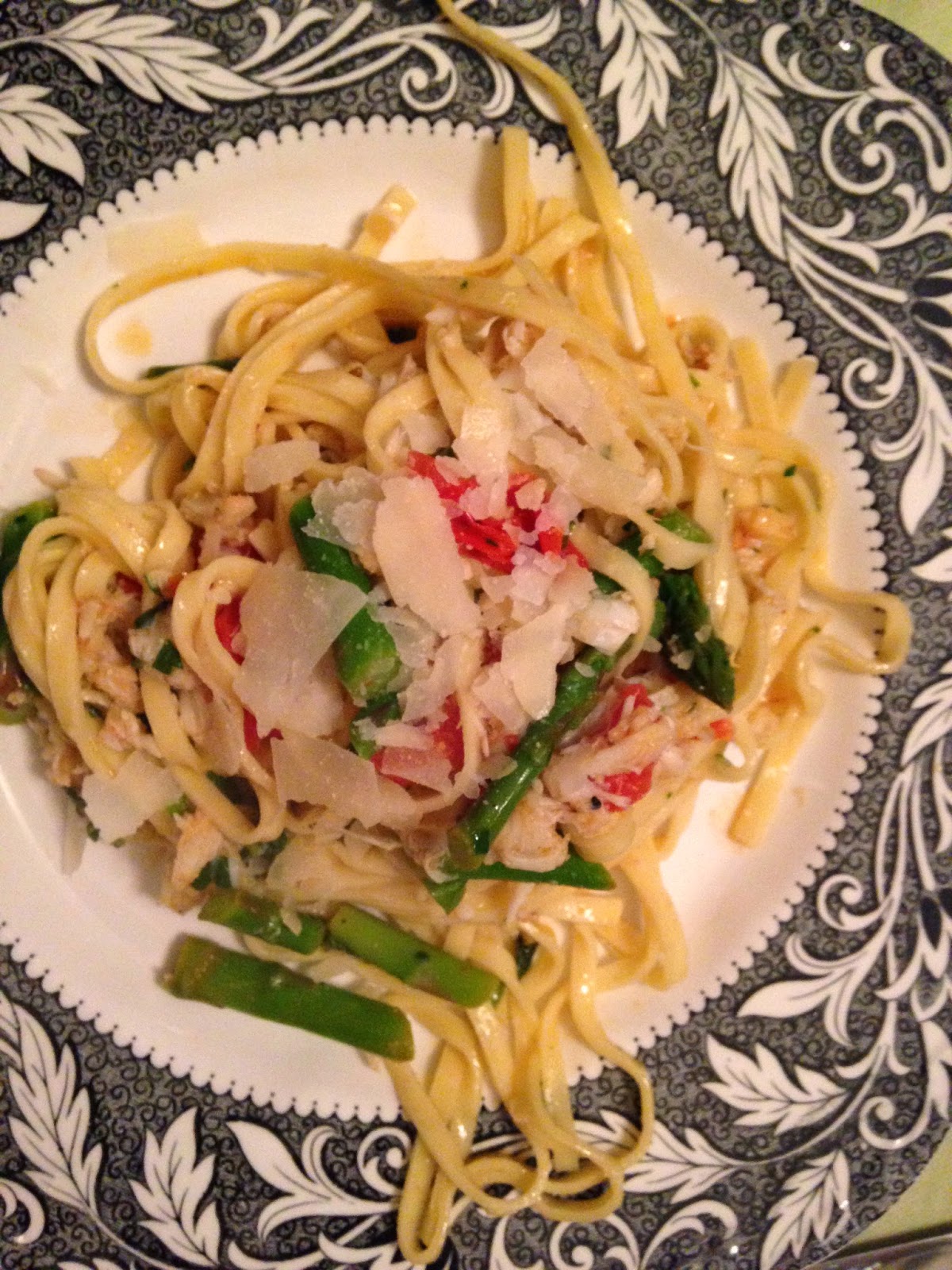Did you know that wonton wrappers are not only inexpensive, but versatile? You can use wonton wrappers to make cookies, mini-pizzas, appetizers, samosas and ravioli.
Ravioli using wonton wrappers....that’s exactly what Architect did when she made our little crew Butternut Squash Ravioli with Brown Butter Sauce, a recipe courtesy of Giada De Laurentiis.
Making ravioli or pasta dough is like making pastry dough. It is a messy endeavor but the results are so worth the toil. Sometimes, however, we (as cooks) wonder if the finished product is proportionately better (considering he time invested) than preparing the same recipe using pre-made alternatives. If, as an example, we use the raviolis Architect made using wonton wrappers, then we can say - straight up, without a doubt, conclusively - that the amount of flavor is not thwarted by the method deployed.
Don’t you just love borrowing tricks to create an efficient culinary experience?
This dish is delicious and pretty. It calls for amaretti cookies and, of course, amaretti cookies are the quintessential Italian treat. Amaretti cookies have an accidental beginning. Legend has it that a husband and wife team from Saronno, Italy whipped up the first batch to serve to a visiting Bishop. The Bishop liked them so much that he blessed the couple to enjoy long, happy marriage with the hopeful consequence that the recipe would passed down through several generations. Amaretti cookies are similar to macaroons and have a subtle coffee-almond flavor. The subtlety is why they work well in this recipe…not overpowering but just enough to add a little sweetness.
Butternut Squash Ravioli with Brown Butter Sauce
Recipe courtesy of Giada De Laurentiis
Ingredients
Squash Ravioli
1 butternut squash, approximately 2 pounds, cubed (about 3 cups)
2 tablespoons extra-virgin olive oil, plus 2 tablespoons
1 1/2 teaspoon herbs de Provence
1/2 teaspoon kosher salt, plus more to taste
1/4 teaspoon freshly ground black pepper, plus more to taste
2 large shallots, chopped (about 1/2 cup)
2 garlic cloves, chopped
1 cup whole milk ricotta cheese
4 small amaretti cookies, crushed (about 1/3 cup)
1/4 teaspoon ground nutmeg
1 package small wonton wrappers
3/4 cup butter (1 1/2 sticks)
2 tablespoons torn fresh sage leaves
1/2 cup toasted walnuts, chopped
1/2 cup dried cranberries, or chopped dried cherries, or mixture of both
1/4 teaspoon kosher salt, plus more to taste
1/4 teaspoon freshly ground black pepper, plus more to taste
1/3 cup grated Parmesan cheese
Directions
To make the ravioli, preheat the oven to 375 degrees F. On a foil-lined baking sheet toss together the butternut squash, 2 tablespoons of olive oil, herbs de Provence, salt, and pepper. Bake in the oven until soft and golden, about 25 minutes. Meanwhile, heat the olive oil in a small saute pan over medium heat. Cook the shallots and garlic until lightly golden, about 3 minutes.
In a food processor, combine the butternut squash mixture, the shallot mixture, and the ricotta cheese and pulse a few times to blend. Add the crushed amaretti cookies, the nutmeg, and sprinkle with salt and freshly ground black pepper. Pulse until smooth. The ravioli filling can be made one day ahead.
To make the ravioli, lay out 6 wonton skins, keeping the remaining skins inside the package or under a very lightly dampened paper towel. Place 1 tablespoon of squash mixture in the middle of each skin. Dip a pastry brush in a little water and wet the edges of the skin. Gently fold the square wrapper into a triangle, making sure the edges are securely closed and there are no air pockets inside. Dampen the two bottom corners of the longest side of the triangle and gently bring them together, pressing lightly to secure. Place the formed ravioli on a baking sheet and cover with plastic wrap. Before laying out another 6 wonton sheets, be careful to dry the work surface. This will help keep tortellini from sticking to the baking sheet. Continue until all the butternut squash mixture is used. There should be approximately 36 ravioli (these can be formed, frozen on the baking sheet, transferred to a tightly sealed plastic bag or container and stored for up to six months). To cook, simply toss the frozen ravioli into the salted boiling water and cook for 4 minutes.)
To make the sauce and serve, bring a large pot of salted water to a boil. Meanwhile, melt the butter in a large, heavy skillet over medium heat.
Add the sage, walnuts and cranberries and let cook until the butter starts to brown, about 3 minutes. Turn the heat off and season with salt, and pepper. Stir to combine. Then, gently place the ravioli in the boiling water and gently stir. When they begin to float they are done, about 3 minutes. Using a slotted spoon, gently spoon the tortellini onto a serving platter, Top with the brown butter sauce, sprinkle with Parmesan cheese and serve.














